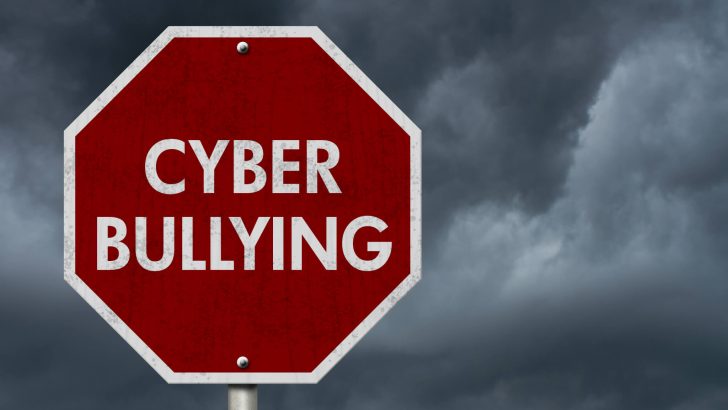Mags Gargan looks at simple recommendations for parents to keep children safer online
Cyberbullying has been described as the “child-protection issue of our time” and it can be very difficult for parents to walk the fine line between allowing their children access to the benefits of the internet while protecting them from the dangers.
In Ireland, half of all nine- to 16-year-olds have been found to use the internet on a daily basis, with this rising to three-quarters of all adolescents. We are seeing an increasing growth of cyberbullying in this country, with approximately one in four girls and one in six boys reporting that they have been targeted.
Last week the ISPCC told the Joint Oireachtas Committee on Children and Youth Affairs of the urgent need for a national cyber safety strategy for children, with CEO Grainia Long, saying their work “has convinced us that as a society we are failing to prepare children to identify risks online, to cope when harm takes place and to empower children and young people to stay safe online”.
The ISPCC’s director of services Caroline O’Sullivan shared the example of one case which involved a nine-year-old child sending naked pictures of herself to the boys in her class. She explained that for this girl “that was what she thought would have been expected”.
Education
She also warned of how the hours spent online affected children’s social interaction, referring to the “constant barrage of what they should be doing” and questions posed by others, such as “whether they are frigid, whether they are sluts”.
She said there was a huge need for education for both parents and children and cited another case where a parent only realised her child was being groomed online by a paedophile by spotting the signs in a computer’s usage history.
As terrifying as this all sounds to any parent, there is a lot that you can do to keep children safe online.
It is a matter of using your own common sense, educating yourself about the dangers and educating your children.
In the same way that they are at their children’s side when they learn to crawl, ride a bike and even drive a car, parents have to teach kids how to use the internet safely.
The knowledge gap between parents and children can make it difficult to put ground rules in place, but it is vitally important to talk to kids about potential dangers and to create boundaries as you would in any other space.
There are several things you can implement straight away to ensure that your child can be safer online, and the ISPCC Childline and Vodafone Ireland Foundation have teamed up to create simple recommendations for parents. Some of these include:
∗ Installing parental controls and passwords on your home broadband and on all devices that your children have access to. Your service and device providers will be able to advise you on how to do this. However, no one approach is entirely fail-safe. Do remember that your child will have access to the online world through wi-fi in friends’ houses and in the community. They need to know that if they come to you when concerned online that you will listen to and support them rather that immediately imposing a discipline.
∗ Agreeing a set of household rules for internet usage including when and for how long your child can be online, keeping personal information private – in particular the simple message what goes online stays online! Children and young people need to be aware that each interaction online is building their digital footprint which records all of their online activity.
∗ Prevent 24 hour online access: It is important that your child gets enough sleep. One way of ensuring that your child is not woken up through the night getting notifications etc. is to remove all devices from bedrooms.
∗ Browser history: If you are genuinely concerned about what your child is doing online, a quick check of your family devices’ browser history will give you a comprehensive list of the sites your child has been visiting. Googling your child’s name will also give an indication of what social media platforms they are active on.
Tech savvy
Parents do not have to be completely tech savvy to educate themselves on the various platforms their children are using to communicate online. Snapchat, Facebook, Instagram and Twitter are among the most popular, but by doing a simple Google search on ‘social media platforms being used by children’ you can find the latest platforms.
This, combined with open and honest discussion with your children, will go a long way to keeping you educated on their online activities.
In order to combat cyberbullying, parents should make sure your child understands that the same rules that apply ‘in real life’ also apply online, and if they see anything to report it – both to parents/teachers and to the site administrators.
If your child is more knowledgeable about the online world than you, ask them to show you how it works. This in turn builds a relationship. Visiting the sites your child is using and taking time to sit with your child to go through all the apps and online services they use together and asking why they like each individual one, will open up the communication channels as well as ensuring you are fully aware of what your child does online and familiarise yourself with how they work.
Additionally, check the age ratings of the social media or online gaming platforms they are using to ascertain whether they are suitable for your child. The PEGI rating is a useful one to go by http://www.pegi.info/ie/
There are safety features installed on all devices and it is a good idea to turn on these before giving a child a device for the first time.
You can also adjust the safety settings on your internet browser, to ensure your children are not coming across inappropriate or dangerous content. There is a huge amount of monitoring software available to aid with this, as well as browsers specifically for children.
By registering on the ‘how to be’ (H2B) safety centre website, you will be able to get access to videos, prompt cards and other resources and practical advice on how to report, block and configure your settings across the most popular apps and games – www.h2bsafetycentre.ie
Potential benefits
From education and schoolwork to entertainment and socialising with friends, children’s use of the internet presents great potential benefits. However, access should be age-appropriate and like every aspect of parenting, the recommendations show us that keeping your children safe online will require lots of your time to manage.
It is important that parents embrace this, and explore the internet alongside their children. Not only will parents educate themselves this way, but they will encourage their children to explore the internet safely and to its full potential.
For the full set of recommendations see: http://www.vodafone.ie/foundation/how-we-support/bestrong
Warnings signs of cyberbullying
∗ Becoming withdrawn or moody, and refusing to talk about what they do online
∗ Spending more time online, or refusing to go online at all
∗ Cutting ties with friends, and showing a reluctance to go to school or extracurricular activities
∗ Being exhausted – if your child has access to their device at night this could be a reason
If you feel that your child is at risk online, you need to have that conversation with them. Assure your child that you will not get angry or overreact, and that you are just looking out for their safety. You should also report any suspicious or potentially abusive activity to the relevant authority, whether it’s the site administrator, your child’s school, or the police.


 Mags Gargan
Mags Gargan
